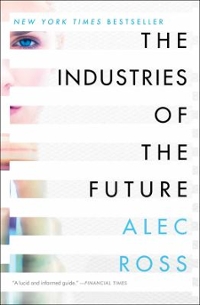Question
1) The downward slope of a demand curve reflects that: a) price is positively relative to quantity supplied. b) there is an inverse relationship between
1) The downward slope of a demand curve reflects that:
a) price is positively relative to quantity supplied.
b) there is an inverse relationship between price and quantity demanded.
c) as price increases, consumers willingly buy more.
d) an increase in income will reduce desired purchases and consumption.
2) The quantity demanded of a good will increase if:
a) the price of the good decreases.
b) the price of a substitute good decreases.
c) average household income decreases (assuming the good is a normal good)
d) the price of a complement good increases.
3) Which of the following would cause an upward shift in the supply curve for a good:
a) an increase in the price of the good.
b) an increase in the price of an input.
c) an increase in demand.
d) a cost saving technological innovation.
4) Airline tickets and luggage are complements if:
a) the demand for luggage increases when the price of airline tickets falls.
b) the supply of luggage increases when the price of airline ticket rises.
c) the demand curves of both goods shift when their respective supply curves shift.
d) the demand for luggage and airline tickets rise and fall together.
5) If the price of a good is R 2, the quantity demanded is 50 and the quantity supplied is 20 there would be a:
a) shortage of 30.
b) surplus of 30.
c) shortage of 50.
d) surplus of 20.
6) When there is a surplus in a market:
a) price is below equilibrium level.
b) there is excess demand.
c)there is downward pressure on price.
d) producers sell more than the equilibrium quantity.
7)A technological advancement for a good will shift the ............. curve of the good to the..............leading to a(n)..............in the equilibrium price:
a) demand; left ; decrease
b) supply ; right ; decrease
c) demand ; right ; increase
d) supply ; left ; increase
8) The market for a good is in equilibrium. If there is a decrease in the price of an input used to produce the good, the impact on the market for the good will be:
a) a decrease in equilibrium price but no change in equilibrium quantity.
b) a decrease in equilibrium price and a decrease in equilibrium quantity.
c) a decrease in equilibrium price and an increase in equilibrium quantity.
d) no change in equilibrium price but an increase in equilibrium quantity.
9) The market for pencils is in equilibrium. If the price of pens (a substitute for pencils) increases the impact on the market for pencils will be ........... in equilibrium price and ............ in equilibrium quantity.
a) a decrease; a decrease
b) a decrease; an increase
c) an increase; a decrease
d) an increase; an increase
10) If the demand for motor vehicles decreases due to a drop in consumer income and at the same time increases in factor prices cause the supply of motor vehicles to decrease, the prices of motor vehicles will:
a) be impossible to determine from the information given.
b) remain the same.
c) decrease.
d) increase.
11) When the supply of coffee decreases as a result of adverse weather conditions and the demand for coffee increases due to an increase in the preference for coffee, the price of coffee will:
a) decrease.
b) first increase and then decrease as demand decreases with the increase in price.
c) either increase or decrease.
d) increase.
12) Consumer surplus is:
a) the consumer's willingness to pay for the good.
b) the total rand value of a good to a consumer.
c) the quantity of a good that a consumer gets but does not have to pay for.
d) the difference between the willingness to pay for a good and the amount that is actually paid to get it.
13) The rand values of willingness to pay for an ice cream for Storme, Pinky, and Judy are R3 , R2.75 and R2.25 respectively. If the price of an increase were R2.50:
a) all three would buy.
b) only Storme and Pinky would buy.
c) only Judy would buy.
d) only Storme would buy.
14) When price falls in a market, total consumer surplus increases because:
a) consumers who would have been willing to buy the good at the original price are now better off.
b) the demand curve shifts to the right as new consumers enter the market and receive some consumer surplus.
c) total expenditure on the good decreases.
d) producer surplus decreases.
Step by Step Solution
There are 3 Steps involved in it
Step: 1

Get Instant Access to Expert-Tailored Solutions
See step-by-step solutions with expert insights and AI powered tools for academic success
Step: 2

Step: 3

Ace Your Homework with AI
Get the answers you need in no time with our AI-driven, step-by-step assistance
Get Started


